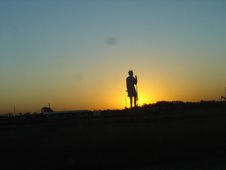"The act was all about Mary"
Peter, Paul and Mary will not register with anyone, probably, under 30 years of age.
I feel safe in that assertion because, after all, in the state of Oklahoma, only 1 in 4 public high school students can name the first president of the United States.
Oh, OK, that's apple and oranges.
But we're dumb and getting dumber. Seriously.
Anyway, Mary Travers died, and she led an interesting life and was a big star, for a time.
“They made folk music not just palatable but accessible to a mass audience,” David Hajdu, the author of “Positively Fourth Street,” a book about Mr. Dylan, Joan Baez and their circle, said in an interview. Ms. Travers, he added, was crucial to the group’s image, which had a lot to do with its appeal. “She had a kind of sexual confidence combined with intelligence, edginess and social consciousness — a potent combination,” he said. “If you look at clips of their performances, the camera fixates on her. The act was all about Mary.”
*
Ms. Travers had no plans to sing professionally. Folk singing, she later said, had been a hobby. At New York clubs friends like Fred Hellerman of the Weavers and Theodore Bikel would coax her onstage to sing, but her extreme shyness made performing difficult. In 1958 she appeared in the chorus and sang one solo number in Mort Sahl’s short-lived Broadway show “The Next President,” but as the ’60s dawned she found herself at loose ends.
By chance, Albert Grossman, who managed a struggling folk singer named Peter Yarrow and would later take on Mr. Dylan as a client, was intent on creating an updated version of the Weavers for the baby-boom generation. He envisioned two men and a woman with the crossover appeal of the Kingston Trio. Mr. Yarrow, talking to Grossman in the Folklore Center in Greenwich Village, noticed Ms. Travers’s photograph on the wall and asked who she was. “That’s Mary Travers,” Grossman said. “She’d be good if you could get her to work.”
*
Virtually overnight Peter, Paul and Mary became one of the most popular folk-music groups in the world. The albums “Moving” and “In the Wind,” both released in 1963, rose to the top of the charts and stayed there for months. In concert the group’s direct, emotional style of performance lifted audiences to their feet to deliver rapturous ovations.
Ms. Travers, onstage, drew all eyes as she shook her hair, bobbed her head in time to the music and clenched a fist when the lyrics took a dramatic turn. On instructions from Grossman, who wanted her to retain an air of mystery, she never spoke. The live double album “In Concert” (1964) captures the fervor of their performances.
On television the group’s mildly bohemian look — Ms. Travers favored beatnik clothing and Mr. Yarrow and Mr. Stookey had mustaches and goatees — gave mainstream audiences their first glimpse of a subculture that had previously been ridiculed on shows like “The Many Loves of Dobie Gillis.”
“You cannot overemphasize those beards,” Mr. Wald said. “They looked like Greenwich Village to the rest of America. They were the first to go mainstream with an artistic, intellectual, beat image.”














3 comments:
Well, my 24-year-old daughter and her 27-yr.-old cousin are mourning her. We raised 'em right. PP&M made two kids' albums that a lot of us baby boomers played for our kids.
I happily stand corrected, auntie dearest.
I love their music. I offer my prayers and condolences to the family.
Post a Comment